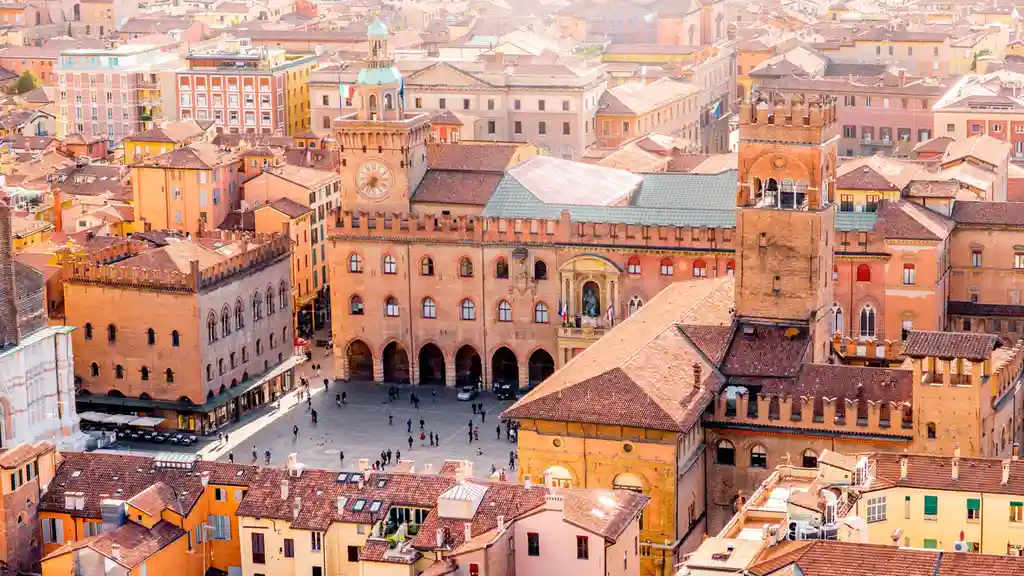Bologna: Italy's Food Capital
Discover the culinary delights of Bologna. Discover the city's rich food culture, historic architecture, and vibrant atmosphere. Experience the best of Italian cuisine in this gastronomic paradise.

Why Bologna is Called Italy's Food Capital Culinary Delights
So, you're thinking about visiting Italy, huh? Forget the Colosseum for a minute (okay, maybe just a minute). Let's talk about Bologna. Why Bologna? Because it's the real deal when it comes to food. Seriously, this city is a culinary powerhouse. It's not just about pasta; it's about a whole experience, a way of life centered around deliciousness. Everyone calls it "La Grassa" - the fat one - and for good reason!
Exploring Bologna's Rich Food Culture Traditional Dishes
Bologna isn't just a place to eat; it's a place to learn about food, to appreciate the traditions behind it. Forget your diet for a week (or two!) because you will be eating. A lot. Here are a few must-try dishes:
- Tagliatelle al Ragù: Okay, so you think you know Bolognese sauce? Think again. This is the real deal. Wide, handmade tagliatelle noodles coated in a rich, meaty ragù that's been simmering for hours. It's not the thin, watery sauce you get in the States. This is serious business.
- Tortellini in Brodo: Tiny, delicate pasta filled with meat and cheese, served in a clear, flavorful broth. It's comfort food at its finest. Each tortellino is carefully folded by hand, a testament to the city's dedication to culinary craftsmanship.
- Lasagne Verde alla Bolognese: Layers of green spinach pasta, ragù, béchamel sauce, and Parmigiano-Reggiano cheese. It's a symphony of flavors and textures. This isn't your grandma's lasagna (unless your grandma is from Bologna!).
- Mortadella: Bologna's signature cured meat. Thinly sliced and served on a panino or as part of an antipasto platter. It's surprisingly delicate and flavorful. Forget everything you think you know about bologna; this is a completely different animal.
- Crescentine and Tigelle: These are kinds of fried dough that are served with meats and cheeses. Tigelle are little round breads that are baked then cut open and stuffed. Crescentine are fried dough that are often served with prosciutto and stracchino cheese.
Bologna's Historic Architecture and Vibrant Atmosphere Food Markets
But Bologna is more than just food. It's a beautiful city with a rich history. The architecture is stunning, with porticoes lining almost every street, providing shade and shelter from the elements. The city's main square, Piazza Maggiore, is a great place to start. The Fountain of Neptune is a must-see.
Don't miss the food markets! The Quadrilatero is a network of narrow streets packed with food stalls and shops. It's a sensory overload in the best possible way. You'll find everything from fresh pasta to cured meats to local cheeses.
The Best of Italian Cuisine in Bologna Restaurant Recommendations
Okay, so where should you eat? Here are a few recommendations:
- Trattoria Anna Maria: A classic Bolognese trattoria serving traditional dishes in a cozy setting. Expect a wait, but it's worth it. This is where you go for that authentic, grandma-made pasta experience.
- Osteria Francescana (Modena, near Bologna): Okay, this one is technically in Modena (a short train ride from Bologna), but it's worth the trip. It's a three-Michelin-starred restaurant that serves innovative and modern Italian cuisine. It's expensive, but it's an experience you won't forget. Book months in advance.
- Tamburini: A historic deli and restaurant in the Quadrilatero. Perfect for a quick lunch or a takeaway snack. Grab a panino with mortadella and some local cheese.
- Mercato di Mezzo: A covered market with a variety of food stalls and restaurants. Great for trying different things and soaking up the atmosphere.
Essential Culinary Tools for the Home Cook Italian Food Preparation
Inspired to bring some of Bologna's culinary magic back home with you? Here are a few essential tools to get you started:
- Pasta Machine: For making fresh pasta, of course! A hand-cranked machine is a classic, but an electric one can save you some time and effort.
- Ravioli Stamp: For making perfect, uniform ravioli. A must-have for any serious pasta maker.
- Mortar and Pestle: For grinding herbs and spices. Essential for making pesto and other Italian sauces.
- Good Quality Olive Oil: A staple of Italian cuisine. Invest in a good quality extra virgin olive oil.
- Parmigiano-Reggiano Cheese Grater: For grating Parmigiano-Reggiano cheese. A fine grater will give you the best results.
Product Recommendations for Italian Cooking at Home Cost and Usage
Let's get specific with some product recommendations. These are all available online or at specialty kitchen stores:
- Marcato Atlas 150 Pasta Machine: A classic, reliable pasta machine. It's easy to use and clean, and it will last for years. Around $80. Great for making lasagna, tagliatelle, fettuccine.
- Fox Run Ravioli Stamp: A simple and effective ravioli stamp. It's easy to use and makes perfect ravioli every time. Around $10. Perfect for making ricotta and spinach ravioli.
- Cole & Mason Granite Mortar and Pestle: A durable and stylish mortar and pestle. It's perfect for grinding herbs and spices. Around $40. Use for making pesto, salsa verde, and other Italian sauces.
- Partanna Extra Virgin Olive Oil: A high-quality extra virgin olive oil from Sicily. It has a rich, fruity flavor. Around $25 per bottle. Use for drizzling over salads, pasta, and grilled vegetables.
- Microplane Premium Classic Zester Grater: A sharp and efficient grater. It's perfect for grating Parmigiano-Reggiano cheese. Around $15. Use for grating cheese over pasta, salads, and soups.
Comparing Pasta Machines Hand-Cranked vs Electric
When it comes to pasta machines, you have two main choices: hand-cranked and electric. Here's a quick comparison:
| Feature | Hand-Cranked | Electric |
|---|---|---|
| Price | Lower | Higher |
| Effort | More | Less |
| Speed | Slower | Faster |
| Control | More | Less |
| Storage | Smaller | Larger |
If you're on a budget and you don't mind putting in a little effort, a hand-cranked machine is a great choice. If you want to save time and effort, an electric machine is the way to go.
Different Types of Olive Oil Extra Virgin vs Virgin
Olive oil can be confusing. Here's a quick rundown of the different types:
- Extra Virgin Olive Oil: The highest quality olive oil. It's made from the first pressing of the olives and has a low acidity level. It has a rich, fruity flavor.
- Virgin Olive Oil: A good quality olive oil, but not as high as extra virgin. It's made from the second pressing of the olives and has a slightly higher acidity level.
- Refined Olive Oil: A lower quality olive oil that has been refined to remove impurities. It has a neutral flavor.
- Olive Pomace Oil: The lowest quality olive oil. It's made from the pulp and pits of the olives. It's often used for cooking at high temperatures.
For the best flavor and health benefits, always choose extra virgin olive oil.
So there you have it – a taste of Bologna, Italy's food capital. Get ready to eat, explore, and experience the best of Italian cuisine!
:max_bytes(150000):strip_icc()/277019-baked-pork-chops-with-cream-of-mushroom-soup-DDMFS-beauty-4x3-BG-7505-5762b731cf30447d9cbbbbbf387beafa.jpg)






